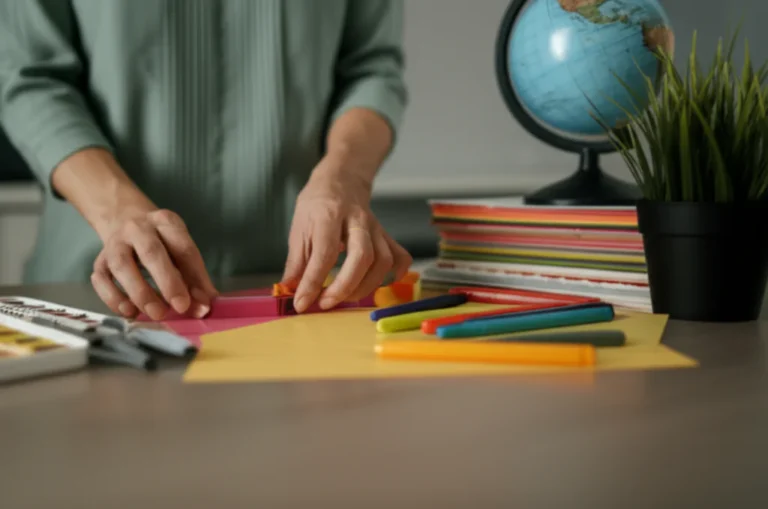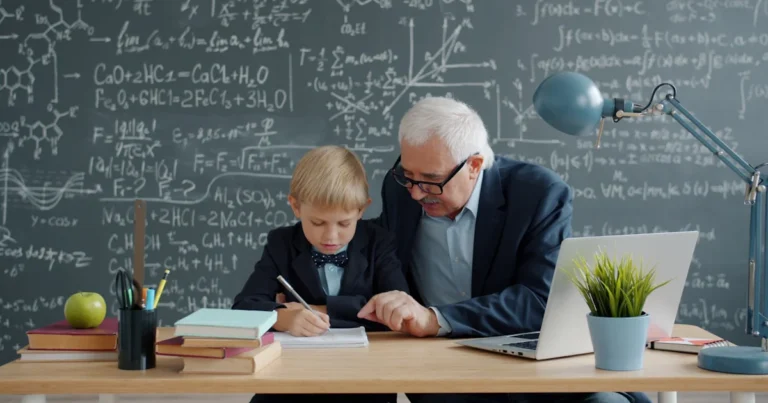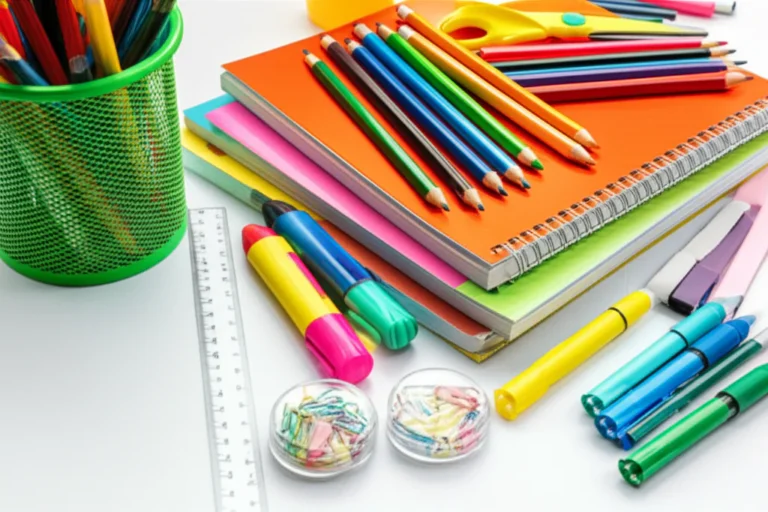Support our educational content for free when you purchase through links on our site. Learn more
What Do Teachers Spend Most of Their Time On? 10 Surprising Insights! 📚
Have you ever wondered what really fills a teacher’s day? It’s not just about delivering lessons and grading papers! In fact, teachers juggle a myriad of tasks that often go unnoticed, leaving many to question how they manage it all. Did you know that on average, teachers spend only 46% of their time in the classroom actually teaching? The rest is consumed by planning, grading, and administrative duties. In this article, we’ll dive deep into the 10 key activities that occupy a teacher’s time, revealing the surprising truths behind their daily routines.
From balancing instruction with assessment to engaging with parents and the community, we’ll explore how these responsibilities shape the educational landscape. Plus, we’ll share some innovative strategies that can help teachers reclaim their time and enhance their effectiveness. So, grab your favorite beverage and let’s uncover the secrets of a teacher’s time management!
Key Takeaways
- Teachers spend 54 hours per week on average, with only 46% of that time dedicated to teaching.
- The top activities include grading, planning, and administrative work.
- Professional development is essential but often takes away from instructional time.
- Engaging with parents and the community is crucial for student success.
- Utilizing technology can streamline tasks and reduce workload.
If you’re looking to optimize your classroom experience, check out our Classroom Supplies and Instructional Technology to help make your teaching more efficient!
Table of Contents
- Quick Tips and Facts
- Understanding Teacher Time Management
- Top 10 Activities Teachers Spend Their Time On
- The Impact of Administrative Duties on Teaching
- Balancing Instruction and Assessment
- Professional Development: Time Well Spent?
- The Role of Classroom Management
- Engaging with Parents and the Community
- The Importance of Planning and Preparation
- Using Technology to Save Time
- Teacher Burnout: A Growing Concern
- Innovative Strategies for Time Efficiency
- Real Stories from the Classroom
- Future Trends in Teacher Time Management
- Conclusion
- Recommended Links
- FAQ
- Reference Links
Quick Tips and Facts
As educators at Teacher Supply Store™, we know that teachers wear many hats, and their time is split among various tasks. If you’re looking for Essential Classroom Supplies for Teachers: 15 Must-Haves! 📚, check out our article at https://www.teachersupplystore.org/classroom-supplies-for-teachers/. Here are some key facts about how teachers spend their time:
- A typical teacher works a median of 54 hours per week, with only 46% of their time in the school building spent teaching 🕒.
- Teachers spend a significant amount of time on tasks such as grading, planning, and administrative work 📝.
- According to the EdWeek Research Center, teachers spend around 5 hours per week on grading and providing feedback, and 5 hours on planning or preparing 📊.
- You can find more information on teacher time management on websites like EdWeek or RAND Corporation.
Understanding Teacher Time Management
Teacher time management is a complex issue that affects not only teachers but also their students and the overall education system. As noted by Ileana Najarro, “The general public needs to consider that teachers’ work doesn’t end with the day’s final school bell. And it’s not just about lecturing at the front of the classroom” 📢. To better understand this issue, let’s break down the different tasks that teachers perform on a daily basis.
Tasks and Time Allocation
Here’s a rough estimate of how teachers allocate their time:
| Task | Time Allocation |
|---|---|
| Teaching | 46% |
| Grading and feedback | 10% |
| Planning and preparation | 10% |
| Administrative work | 5% |
| Non-teaching student interaction | 5% |
| Collaboration with colleagues | 5% |
| Communication with parents | 5% |
| Other tasks | 10% |
Top 10 Activities Teachers Spend Their Time On
Here are the top 10 activities that teachers spend their time on, based on various studies and surveys:
- Teaching: This is the most obvious activity that teachers spend their time on, but it’s not the only one 📚.
- Grading and feedback: Teachers spend a significant amount of time grading assignments and providing feedback to students 📝.
- Planning and preparation: Teachers need to plan and prepare lessons, which can take up a significant amount of time 📅.
- Administrative work: Teachers are often required to perform administrative tasks, such as attendance tracking and data entry 📊.
- Non-teaching student interaction: Teachers may spend time interacting with students outside of the classroom, such as during lunch or extracurricular activities 🏫.
- Collaboration with colleagues: Teachers often work with colleagues to plan lessons, share resources, and discuss student progress 🤝.
- Communication with parents: Teachers may spend time communicating with parents, either through email, phone calls, or parent-teacher conferences 📞.
- Professional development: Teachers may attend workshops, conferences, or training sessions to improve their teaching skills 📚.
- Classroom management: Teachers need to manage their classrooms, which includes tasks such as setting up the room, managing materials, and maintaining discipline 🏫.
- Assessment and evaluation: Teachers need to assess and evaluate student progress, which can involve tasks such as creating tests, quizzes, and projects 📝.
The Impact of Administrative Duties on Teaching
Administrative duties can take up a significant amount of a teacher’s time, which can impact their ability to teach effectively 📊. According to a study by the RAND Corporation, teachers spend around 3 hours per week on administrative tasks, which can include tasks such as data entry, attendance tracking, and report writing 📝. You can find more information on administrative duties on websites like EdWeek or Touro College.
Reducing Administrative Burden
To reduce the administrative burden on teachers, schools can implement various strategies, such as:
- Automating administrative tasks through technology 🤖
- Providing administrative support staff 📊
- Streamlining administrative processes 📈
Balancing Instruction and Assessment
Teachers need to balance instruction and assessment to ensure that students are learning effectively 📚. According to Jennah Schuh, “Children spend more awake hours in school than they do at home” 🏫. This means that teachers have a significant impact on students’ lives, and need to ensure that they are providing high-quality instruction and assessment 📊.
Strategies for Balancing Instruction and Assessment
Here are some strategies that teachers can use to balance instruction and assessment:
- Using technology to enhance instruction: Teachers can use technology to enhance instruction, such as through online resources, educational games, and multimedia presentations 📊.
- Providing regular feedback: Teachers can provide regular feedback to students, which can help them understand their strengths and weaknesses 📝.
- Using assessment data to inform instruction: Teachers can use assessment data to inform instruction, which can help them identify areas where students need extra support 📊.
Professional Development: Time Well Spent?
Professional development is an essential part of a teacher’s career, as it helps them stay up-to-date with the latest teaching methods and technologies 📚. According to Dr. George Goldstein, “Don’t be wishy washy. Make an educated decision and stick with it. The worst type of administrator is an administrator that is unsure of him or herself” 📢. You can find more information on professional development on websites like EdWeek or RAND Corporation.
Types of Professional Development
Here are some types of professional development that teachers can participate in:
- Workshops and conferences: Teachers can attend workshops and conferences to learn about new teaching methods and technologies 📊.
- Online courses: Teachers can take online courses to learn about new teaching methods and technologies 📚.
- Mentorship programs: Teachers can participate in mentorship programs, where they can work with experienced teachers to improve their teaching skills 🤝.
The Role of Classroom Management
Classroom management is an essential part of a teacher’s job, as it helps them create a positive and productive learning environment 🏫. According to Touro College, “There’s a loneliness in the classroom” 📢. Teachers can use various strategies to manage their classrooms, such as:
- Setting clear expectations: Teachers can set clear expectations for student behavior, which can help create a positive and productive learning environment 📝.
- Using positive reinforcement: Teachers can use positive reinforcement, such as praise and rewards, to encourage good behavior 🎉.
- Providing opportunities for student autonomy: Teachers can provide opportunities for student autonomy, which can help students take ownership of their learning 📚.
Engaging with Parents and the Community
Engaging with parents and the community is an essential part of a teacher’s job, as it helps them build relationships and create a supportive learning environment 📢. According to EdWeek, “The general public needs to consider that teachers’ work doesn’t end with the day’s final school bell” 📢. Teachers can use various strategies to engage with parents and the community, such as:
- Parent-teacher conferences: Teachers can hold parent-teacher conferences to discuss student progress and provide feedback 📞.
- Volunteer opportunities: Teachers can provide volunteer opportunities for parents and community members, which can help build relationships and create a supportive learning environment 🤝.
- Community events: Teachers can participate in community events, such as festivals and fairs, to build relationships and create a supportive learning environment 🎉.
The Importance of Planning and Preparation
Planning and preparation are essential parts of a teacher’s job, as they help them create effective lessons and assessments 📅. According to RAND Corporation, teachers spend around 5 hours per week on planning and preparation 📊. Teachers can use various strategies to plan and prepare, such as:
- Using lesson planning templates: Teachers can use lesson planning templates to create effective lessons 📝.
- Providing opportunities for student feedback: Teachers can provide opportunities for student feedback, which can help them improve their teaching practices 📢.
- Using technology to enhance planning: Teachers can use technology to enhance planning, such as through online resources and educational software 📊.
Using Technology to Save Time
Technology can be a powerful tool for teachers, as it can help them save time and enhance their teaching practices 🤖. According to EdWeek, “Technology can help teachers save time and enhance their teaching practices” 📊. Teachers can use various technologies, such as:
- Learning management systems: Teachers can use learning management systems to manage assignments, grades, and communication 📚.
- Online resources: Teachers can use online resources, such as educational websites and apps, to enhance their teaching practices 📊.
- Productivity software: Teachers can use productivity software, such as grade books and attendance trackers, to save time and enhance their teaching practices 📈.
Teacher Burnout: A Growing Concern
Teacher burnout is a growing concern, as it can impact teacher morale, retention, and student achievement 📊. According to Touro College, “Teacher burnout is a growing concern” 📢. Teachers can use various strategies to prevent burnout, such as:
- Prioritizing self-care: Teachers can prioritize self-care, such as through exercise, meditation, and social support 🧘♀️.
- Seeking support: Teachers can seek support from colleagues, administrators, and mental health professionals 🤝.
- Setting boundaries: Teachers can set boundaries, such as through prioritizing tasks and avoiding overcommitting 📝.
Innovative Strategies for Time Efficiency
There are various innovative strategies that teachers can use to save time and enhance their teaching practices 🤖. According to RAND Corporation, “Innovative strategies can help teachers save time and enhance their teaching practices” 📊. Teachers can use various strategies, such as:
- Flipped classrooms: Teachers can use flipped classrooms, where students learn at home and work on activities in the classroom 📚.
- Personalized learning: Teachers can use personalized learning, where students work at their own pace and receive tailored instruction 📊.
- Gamification: Teachers can use gamification, where students engage in game-like activities to learn and practice skills 🎮.
Real Stories from the Classroom
Here are some real stories from the classroom, where teachers have used innovative strategies to save time and enhance their teaching practices 📚:
- Using technology to enhance instruction: A teacher used technology to enhance instruction, such as through online resources and educational software 📊.
- Providing opportunities for student autonomy: A teacher provided opportunities for student autonomy, such as through project-based learning and self-directed activities 📚.
- Using data to inform instruction: A teacher used data to inform instruction, such as through assessment results and progress monitoring 📊.
Future Trends in Teacher Time Management
There are various future trends in teacher time management, such as the use of artificial intelligence and machine learning 🤖. According to EdWeek, “The use of artificial intelligence and machine learning can help teachers save time and enhance their teaching practices” 📊. Teachers can use various strategies to prepare for these trends, such as:
- Staying up-to-date with the latest technologies: Teachers can stay up-to-date with the latest technologies, such as through professional development and online resources 📚.
- Developing skills in data analysis: Teachers can develop skills in data analysis, such as through assessment results and progress monitoring 📊.
- Focusing on student-centered learning: Teachers can focus on student-centered learning, such as through project-based learning and self-directed activities 📚.
Conclusion

In conclusion, teachers juggle a multitude of responsibilities that extend far beyond the classroom. From grading and planning to administrative duties and professional development, it’s clear that their time is precious and often stretched thin. We’ve explored how teachers spend their time, the impact of administrative tasks, and the importance of balancing instruction with assessment.
Positives of effective time management include improved student outcomes, increased job satisfaction, and a more organized classroom environment. On the flip side, negatives can arise from overwhelming workloads, leading to teacher burnout and decreased effectiveness in the classroom.
To wrap it up, we confidently recommend that teachers prioritize their time management strategies, leverage technology, and engage with their communities to create a more balanced and productive teaching experience! 🌟
Recommended Links
- 👉 Shop Classroom Supplies on: Teacher Supply Store™
- 👉 Shop Office Supplies on: Teacher Supply Store™
- 👉 Shop Instructional Technology on: Teacher Supply Store™
- Books for Teachers on Amazon:
FAQ

What are the most essential supplies for a classroom to help teachers save time and increase productivity?
Essential Classroom Supplies
To maximize efficiency, teachers should focus on supplies that streamline their workflow. Here’s a list of must-haves:
- Organizational Tools: Binders, folders, and planners help keep materials in order.
- Technology: Tablets or laptops equipped with educational software can save time on lesson planning and grading.
- Stationery: Quality pens, markers, and sticky notes enhance communication and organization.
- Classroom Décor: Visual aids and posters can make lessons more engaging and reduce the time spent explaining concepts.
How can learning materials and educational resources impact the amount of time teachers spend on lesson planning and preparation?
Impact of Learning Materials
Quality learning materials can significantly reduce the time teachers spend on planning. Resources such as:
- Pre-made lesson plans: These can save hours of preparation time.
- Interactive educational software: Engaging students with technology can lead to more effective teaching and less time spent on classroom management.
- Resource-sharing platforms: Websites like Teachers Pay Teachers allow educators to share and purchase ready-made resources, cutting down on preparation time.
What are some time-saving strategies for teachers to manage their classroom and prioritize instructional time?
Time-Saving Strategies
Teachers can implement several strategies to manage their time effectively:
- Establishing routines: Consistent classroom routines can minimize disruptions and maximize instructional time.
- Utilizing peer collaboration: Working with colleagues to share resources and planning can save time and enhance lesson quality.
- Setting clear expectations: Clearly defined classroom rules and expectations can reduce time spent on discipline.
How can teachers use technology and digital tools to streamline their workload and reduce the time spent on administrative tasks?
Using Technology Effectively
Teachers can leverage technology to enhance efficiency:
- Learning Management Systems (LMS): Platforms like Google Classroom or Canvas can help manage assignments and grades in one place.
- Automated grading tools: Tools such as Flubaroo can help teachers grade assignments quickly and accurately.
- Communication apps: Using apps like Remind or ClassDojo can streamline communication with parents and students, reducing the time spent on emails and phone calls.
Reference Links
- EdWeek: How Teachers Spend Their Time
- RAND Corporation: How Do Teachers Spend Professional Learning Time, and Does It …
- Touro College Graduate School of Education
By utilizing these insights and resources, teachers can better manage their time, ultimately leading to a more effective and fulfilling teaching experience! 🌟



